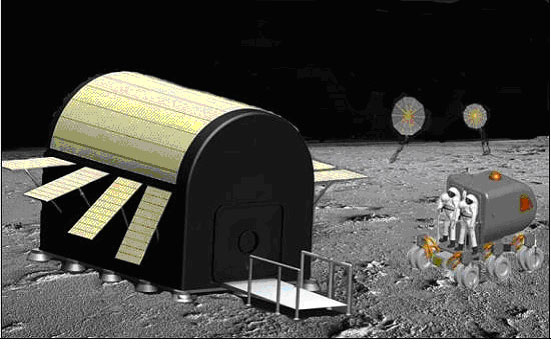The radiation from solar flares and cosmic rays and their potential for causing DNA damage clearly pose a threat to astronauts spending extended periods of time on the Moon. Now a team of engineering students from North Carolina State University (NCSU) has designed a “lunar textsheild”—a layered blanket made of lightweight polymer material. The outer service of the shield is a flexible array of solar cells that generate electricity. Underneath, a layer of radiation shielding deflects or absorbs incoming particles to protect astronauts in lunar outposts. The students entered their design in a NASA-sponsored aerospace engineering competition for college students that will begin June 1. According to engineering student Michael Sieber, the textshield meets two vital criteria. It’s lightweight enough for easy inclusion in the transportation module, and it’s easily erected for immediate use upon landing on the lunar surface. Sieber and his team will pit their blanket against designs conceived by 14 other teams, some of which might be used in future missions.View the original press release on the NCSU website.
Giant Blanket as Lunar Shield
